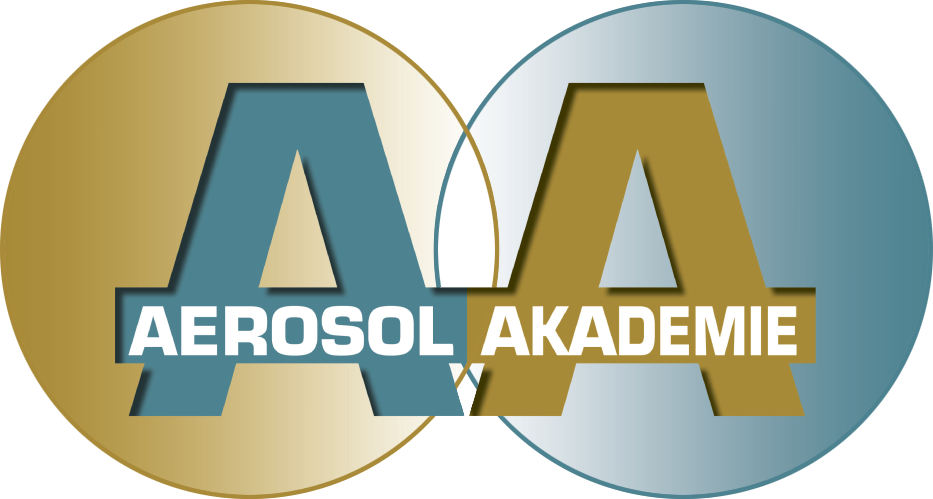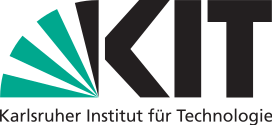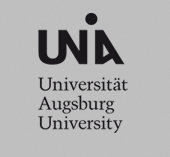The project partners participating in “SmartAQnet - Smart Air Quality Network - Analysis and Assessment of New Air Quality Measurement Methods and Science Communication to the Public and Special Stakeholders” present themselves in the following paragraphs (in alphabetical order).
 The Aerosol Akademie (short: AA) is a regional, national and international contact point for persons and institutions from science, industry, authorities and administration. It operates an interdisciplinary active network for cooperation (projects), communication and knowledge about aerosol technology and aerosol research. The Aerosol Academy is a membership organization, its sponsoring association consists of stakeholders and supporters from science, industry and political administration, between whose objectives and organizational strategies it forms an institutionalized interface. Their expertise in the project encompasses aerosol, gas and climate technology in general, and opto-technical signal acquisition and signal conditioning in particular. The Aerosol Academy is thus a multiplier and important partner for activities in the dissemination of project results and networking with other projects and institutions. For more information see www.aerosol-akademie.de
.
The Aerosol Akademie (short: AA) is a regional, national and international contact point for persons and institutions from science, industry, authorities and administration. It operates an interdisciplinary active network for cooperation (projects), communication and knowledge about aerosol technology and aerosol research. The Aerosol Academy is a membership organization, its sponsoring association consists of stakeholders and supporters from science, industry and political administration, between whose objectives and organizational strategies it forms an institutionalized interface. Their expertise in the project encompasses aerosol, gas and climate technology in general, and opto-technical signal acquisition and signal conditioning in particular. The Aerosol Academy is thus a multiplier and important partner for activities in the dissemination of project results and networking with other projects and institutions. For more information see www.aerosol-akademie.de
.
 The Environmental Department of the City of Augsburg (short: AUG) supports the project of the Parnterverbund as an unsubmitted project partner. The communication with interested Augsburg schools, which are already active in the field of environmental research and air monitoring, is made possible and facilitated by the Environmental Department. If necessary, the city of Augsburg can also be involved in the measurements of urban enterprises (for example, public transport, municipal utilities, etc.). For more information see http://www.augsburg.de/umwelt-soziales/umwelt/
.
The Environmental Department of the City of Augsburg (short: AUG) supports the project of the Parnterverbund as an unsubmitted project partner. The communication with interested Augsburg schools, which are already active in the field of environmental research and air monitoring, is made possible and facilitated by the Environmental Department. If necessary, the city of Augsburg can also be involved in the measurements of urban enterprises (for example, public transport, municipal utilities, etc.). For more information see http://www.augsburg.de/umwelt-soziales/umwelt/
.
 The GRIMM Aerosol Technologie GmbH & Co. KG in Ainring (short: GRIMM) is one of the world’s leading companies in the field of environmental and occupational safety measurements, whether at authorities, in research and teaching institutions, at safety engineers or accredited bodies for air quality measurements. For more than 30 years, GRIMM stands for the optical fine dust measurement “Made in Europe”. Since 1 October 2015, the company is a member of the DURAG GROUP. Since the company GRIMM has been active in the development of airborne particle measuring devices for many decades, there is a great deal of know-how in order to minimize or eliminate the above-mentioned problems. This is not technically trivial and requires in some areas the development of completely new measuring cells, signal evaluation strategies and software packages. GRIMM devices are mentioned in more than 1000 scientific publications worldwide as measuring devices or examination objects. Since the above problems in the development of laser aerosol spectrometers have been successfully solved in some cases, GRIMM sees itself as being able to develop cost-effective nephelometry into an almost equivalent alternative to the very complex spectrometry by suitable developments beyond today’s informative value, cross sensitivities and application possibilities , It should be a universal use, both mobile and airworthy or stationary possible. For more information see
http://www.grimm-aerosol.com/
.
The GRIMM Aerosol Technologie GmbH & Co. KG in Ainring (short: GRIMM) is one of the world’s leading companies in the field of environmental and occupational safety measurements, whether at authorities, in research and teaching institutions, at safety engineers or accredited bodies for air quality measurements. For more than 30 years, GRIMM stands for the optical fine dust measurement “Made in Europe”. Since 1 October 2015, the company is a member of the DURAG GROUP. Since the company GRIMM has been active in the development of airborne particle measuring devices for many decades, there is a great deal of know-how in order to minimize or eliminate the above-mentioned problems. This is not technically trivial and requires in some areas the development of completely new measuring cells, signal evaluation strategies and software packages. GRIMM devices are mentioned in more than 1000 scientific publications worldwide as measuring devices or examination objects. Since the above problems in the development of laser aerosol spectrometers have been successfully solved in some cases, GRIMM sees itself as being able to develop cost-effective nephelometry into an almost equivalent alternative to the very complex spectrometry by suitable developments beyond today’s informative value, cross sensitivities and application possibilities , It should be a universal use, both mobile and airworthy or stationary possible. For more information see
http://www.grimm-aerosol.com/
.
 The Institute of Epidemiology (EPI) is part of the Helmholtz Zentrum München, German Research Center for Health and Environment (GmbH) an its research focuses on the comprehensive collection of environmental stressors (e.g. air pollutants, meteorological parameters, noise) as well as on the study of risk factors for the development of diabetes or cardiovascular diseases. Since 1997 the institute has been researching the role of fine and ultrafine particles in Augsburg in triggering heart attacks and cardiovascular diseases. This research is based on the unique KORA cohort and the KORA heart attack registry in Augsburg. In order to investigate more precisely the influence of physical and chemical properties of the particles on human health, in cooperation with the University of Augsburg since 2005 a KORA aerosol measuring station has been operated in Augsburg, which allows a precise characterization of the physical and chemical properties of particles in the outside air. For more information see
Helmholtz Zentrum München Institut EPI Forschungsgruppe Environmental Exposure Assessment
.
The Institute of Epidemiology (EPI) is part of the Helmholtz Zentrum München, German Research Center for Health and Environment (GmbH) an its research focuses on the comprehensive collection of environmental stressors (e.g. air pollutants, meteorological parameters, noise) as well as on the study of risk factors for the development of diabetes or cardiovascular diseases. Since 1997 the institute has been researching the role of fine and ultrafine particles in Augsburg in triggering heart attacks and cardiovascular diseases. This research is based on the unique KORA cohort and the KORA heart attack registry in Augsburg. In order to investigate more precisely the influence of physical and chemical properties of the particles on human health, in cooperation with the University of Augsburg since 2005 a KORA aerosol measuring station has been operated in Augsburg, which allows a precise characterization of the physical and chemical properties of particles in the outside air. For more information see
Helmholtz Zentrum München Institut EPI Forschungsgruppe Environmental Exposure Assessment
.
 Since the mid-1990s, the Cooperation Group Comprehensive Molecular Analytics (CMA), also part of the Helmholtz Zentrum München, German Research Center for Health and Environment (GmbH),has been researching the composition and sources of particles (PM) and processes that can lead to the formation of new particles (so-called secondary aerosol) in the environment. One focus of CMA’s work is the development and application of methods to detect the chemical composition of the organic fraction of the aerosol with high sensitivity and accuracy. Numerous studies have investigated the parameters influencing the variability of PM concentrations in the environment (including source strengths, propagation conditions, photochemical aging). In particular, investigations on the temporal and spatial variability of PM in the environment and the comparison or merging of different methods for source assignment are in focus. Methods already established in the working group for highly sensitive detection of personal exposure are currently being further developed. For more information see
Helmholtz Zentrum München Kooperationrsgrupp CMA Forschungsgruppe Aerosol Chemie
.
Since the mid-1990s, the Cooperation Group Comprehensive Molecular Analytics (CMA), also part of the Helmholtz Zentrum München, German Research Center for Health and Environment (GmbH),has been researching the composition and sources of particles (PM) and processes that can lead to the formation of new particles (so-called secondary aerosol) in the environment. One focus of CMA’s work is the development and application of methods to detect the chemical composition of the organic fraction of the aerosol with high sensitivity and accuracy. Numerous studies have investigated the parameters influencing the variability of PM concentrations in the environment (including source strengths, propagation conditions, photochemical aging). In particular, investigations on the temporal and spatial variability of PM in the environment and the comparison or merging of different methods for source assignment are in focus. Methods already established in the working group for highly sensitive detection of personal exposure are currently being further developed. For more information see
Helmholtz Zentrum München Kooperationrsgrupp CMA Forschungsgruppe Aerosol Chemie
.
 Among other things, the working group of Prof. Emeis of the Institute of Meteorology and Climate Research - Atmospheric Environmental Research (short: IMK-IFU) at the Karlsruhe Institute of Technology has expertise in monitoring and urban climate research. It is currently working as one of 14 German partners in the BMBF urban climate project on the validation of a model chain for the numerical simulation of urban climate from the street scale to the regional scale. The focus is on the vertical structure of the urban boundary layer, which can be measured using ground-based telemetry techniques. Other research interests include the complex collection of all data needed in interdisciplinary and transdisciplinary urban research, i.e. data from the scientific, technical and social fields and in general the exchange processes between the urban ecosystem and the atmosphere. For more information see
https://www.imk-ifu.kit.edu/institute.php
.
Among other things, the working group of Prof. Emeis of the Institute of Meteorology and Climate Research - Atmospheric Environmental Research (short: IMK-IFU) at the Karlsruhe Institute of Technology has expertise in monitoring and urban climate research. It is currently working as one of 14 German partners in the BMBF urban climate project on the validation of a model chain for the numerical simulation of urban climate from the street scale to the regional scale. The focus is on the vertical structure of the urban boundary layer, which can be measured using ground-based telemetry techniques. Other research interests include the complex collection of all data needed in interdisciplinary and transdisciplinary urban research, i.e. data from the scientific, technical and social fields and in general the exchange processes between the urban ecosystem and the atmosphere. For more information see
https://www.imk-ifu.kit.edu/institute.php
.
 The research activities at the Department of Physical Geography and Quantitative Methods of the Institute of Geography of the University of Augsburg (IGUA) focus primarily on the three areas of climate research, landscape research and biogeography. Central importance is attached to climate research with a focus on climate dynamics and climate change, which will be examined in the working group on climate research. At the Institute of Geography, earlier, fundamental studies of the urban climate in Augsburg are flanked by synoptic analyzes and distributed and mobile measurements in the urban area. The Unmanned Aeronautical Systems Working Group of the University of Augsburg (AULA) at the IGUA has been developing unmanned aerial systems (UAS) since around 2013 for the three-dimensional sounding of the atmospheric boundary layer. Other projects with UAS deployment are e.g. ScaleX, Feasibility Study Aerosol Supersite or Urban Climate Under Change.
The research activities at the Department of Physical Geography and Quantitative Methods of the Institute of Geography of the University of Augsburg (IGUA) focus primarily on the three areas of climate research, landscape research and biogeography. Central importance is attached to climate research with a focus on climate dynamics and climate change, which will be examined in the working group on climate research. At the Institute of Geography, earlier, fundamental studies of the urban climate in Augsburg are flanked by synoptic analyzes and distributed and mobile measurements in the urban area. The Unmanned Aeronautical Systems Working Group of the University of Augsburg (AULA) at the IGUA has been developing unmanned aerial systems (UAS) since around 2013 for the three-dimensional sounding of the atmospheric boundary layer. Other projects with UAS deployment are e.g. ScaleX, Feasibility Study Aerosol Supersite or Urban Climate Under Change.
For more information see https://www.geo.uni-augsburg.de/en/chairs_professorships/phygeo/
.
 The Chair of Pervasive Computing Systems and the research group TECO (short: KIT-TECO) of the
Karlsruhe Institute of Technology (KIT) have a long tradition in research in
the areas of pervasive and ubiquitous computing, with a focus on wireless
communication, embedded systems, Data analytics and human-computer interaction
(HCI). Research includes mobile participatory aerosol measurements in Citizen
Science and distributed measurement scenarios, as well as low-power wireless
communication and portable sensor platforms that communicate with smartphones.
The impact of non-experts and their integration into the measurement chain is
being explored as an important aspect of environmental measurements, as is the
distributed calibration of cost-effective sensors and the protection of privacy
in such systems. For more information see http://www.teco.edu/research/smartaqnet/.
The Chair of Pervasive Computing Systems and the research group TECO (short: KIT-TECO) of the
Karlsruhe Institute of Technology (KIT) have a long tradition in research in
the areas of pervasive and ubiquitous computing, with a focus on wireless
communication, embedded systems, Data analytics and human-computer interaction
(HCI). Research includes mobile participatory aerosol measurements in Citizen
Science and distributed measurement scenarios, as well as low-power wireless
communication and portable sensor platforms that communicate with smartphones.
The impact of non-experts and their integration into the measurement chain is
being explored as an important aspect of environmental measurements, as is the
distributed calibration of cost-effective sensors and the protection of privacy
in such systems. For more information see http://www.teco.edu/research/smartaqnet/.